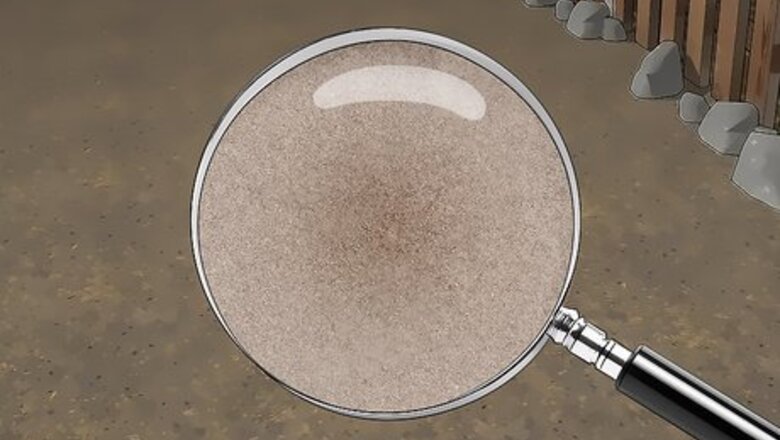
views
Estimating Soil Moisture by Look and Feel
Stick your finger 1–2 inches (2.5–5.1 cm) into the soil. If the soil feels dry or if it falls off of your finger when you remove it, the soil may be dry. If the soil feels moist or if the soil sticks to your finger, the soil may be moist.
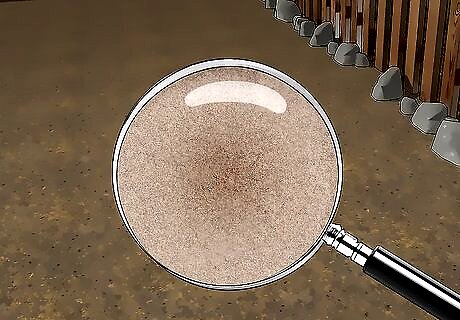
Identify dry soil by its light-colored, compacted appearance. If you’re just trying to get a general idea of how dry or moist your soil is, simply take a good look at it. If it’s a light color, such as tan, and/or is hard and compacted together, then your soil is most likely on the drier side. This may mean that you need to water your soil more. Keep in mind that some soil naturally looks lighter, despite the amount of moisture in it. Familiarize yourself with how your specific type of soil typically looks before you assume that it’s dry.
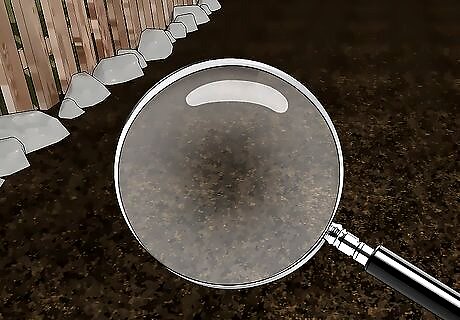
Recognize moist soil by its muddy, mossy appearance. Soil that has a lot of moisture in it tends to be waterlogged and squishy. This is a good environment for growth, so you may also notice that moist soil has moss and other greenery growing on its surface. If your soil looks like this, then you may need to install an irrigation system to keep your plants from getting root rot.
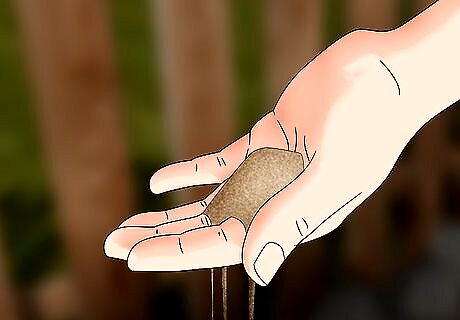
Spot dry soil by its inability to hold shape or stain. Pick up a handful of the soil. Close the soil tightly in your hand and then open your hand back up. If the soil remains in a loose pile, then it may be dry. Drop the sand and brush the soil off of your palm. If your hand looks relatively clean, this is further proof that the soil is dry.
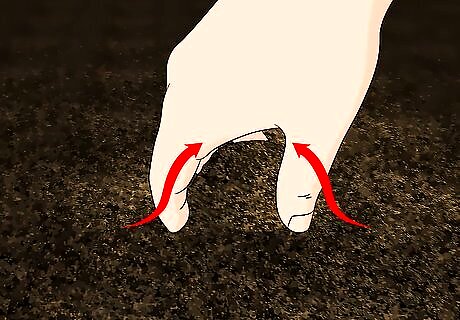
Identify moist soil by its ability to stain and hold shape. If you close the soil in your hand, open your hand back up, and the soil has stuck together and formed into a ball, then it’s likely moist. You may also assume that the soil is moist if your hand is heavily stained after you’ve dropped the soil and brushed it off.
Using a Simple Moisture Probe
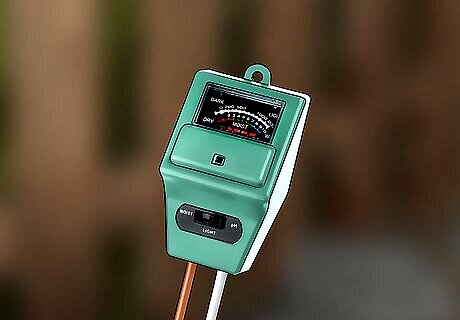
Purchase a basic soil moisture probe. Go to your local hardware store and look for a soil moisture probe or a soil moisture meter. This is a tool that can quickly and easily determine your soil’s moisture level when it’s inserted into the ground. The prices of probes and meters vary based on type and capability. You can expect to pay $10-20 USD for a moisture probe that has a traditional scale indicator and few other capabilities. If you want a traditional probe or meter that has multiple capabilities, it’ll likely cost you closer to $50 USD. Digital probes and meters with few capabilities can cost as little as $30-40 USD, while more advanced ones that can determine other measurements can cost $50-200 USD or more. Some other capabilities that soil moisture probes and meters often have include measuring the pH value of the soil and determining soil temperature.

Push the probe into the soil and read the results. Push the probe down into your soil and wait to see the results. This should only take a couple of seconds. Once the probe has effectively assessed the moisture level of the soil, a number should pop up on the display area if you’re using a digital probe. If you’re using a traditional probe, you should see the arrow move and stop at a specific number on the scale indicator. Read this number once it is displayed. If you’re hoping to get an accurate idea of how much moisture there is in the soil that makes up a large area, take a few more readings in different spots that are spread out within the area. In the very least, test your soil any time it looks and feels very dry or very wet. This way, you can find out the exact moisture level and water or irrigate your soil accordingly.
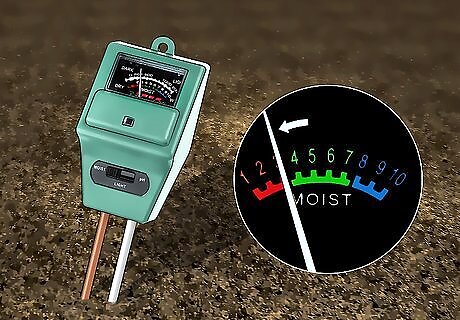
Identify dry soil by a number lower than 5. It’s typically best to keep your soil around 5. While different plants thrive in different levels of moisture, 5 is a good middle ground where a variety of plants can grow and flourish. If the probe displays a number lower than 5, your soil is dry. In this case, consider watering your soil.
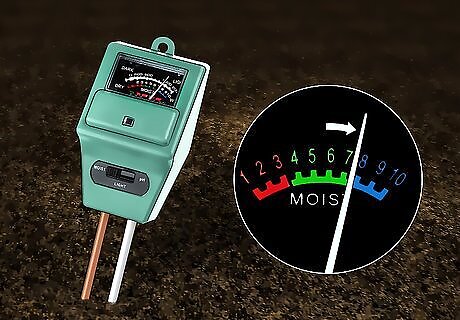
Spot moist soil by a number higher than 5. You may find that the number displayed on your probe in greater than 5. This means that your soil is moist. While moist soil often encourages growth, it can cause issues if it gets too waterlogged. Consider setting up an irrigation system to help drain your soil.
Using Scientific Methods

Try the gravimetric method. To measure your soil moisture using the gravimetric method, scoop up a small sample of it and use a small metric scale to weigh it. Put the sample on a baking sheet and put it in your oven. Dry the soil out in the oven by setting it to 221 °F (105 °C) for 24 hours. Then, weigh the sample again. The difference in the weight before and after drying the soil in the oven will reveal how much moisture is in the soil. A smaller weight difference indicates dry soil while a larger weight difference indicates moist soil. Different types of soil can survive on different amounts of water. However, the ideal balance for most soil types is 50% solids, 25% water, and 25% air. To calculate the exact amount of water that makes up the soil sample, subtract the dry weight of the soil from the wet weight of the soil (in grams). Then, divide this total by the dry weight of the soil and multiply this total by 100. For example, if the sample weighs 6 oz (170g) when wet and 5 oz (140g) when dry, then your sample is made up of 21.4% water.
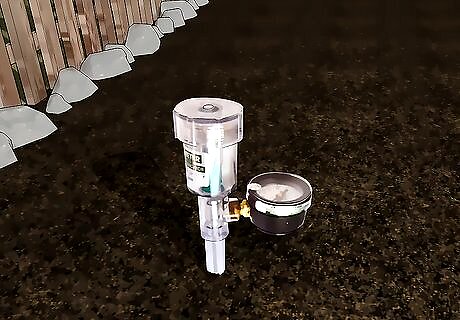
Use a tensiometer to determine the water tension. Tensiometers, which can be purchased online, are sealed, water-filled tubes that have a porous base and a vacuum gauge top. Insert the device into the soil at the depth of your plants’ roots and read the gauge at the top to find out how much water is available in the soil. The price range for tensiometers is typically between about $70 USD and $200 USD. If your tensiometer determines that the water tension in the soil is 10 centibars or lower, there is an excessive amount of moisture in the soil and you may need to irrigate. If your tensiometer determines that the water tension in the soil is between 60 and 80 centibars, your soil is likely too dry and needs to be watered.
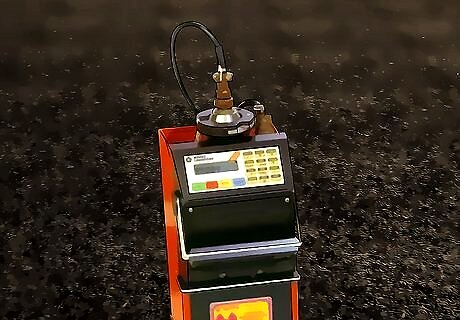
Scatter neutrons in the soil to get specialized measurements. Insert a neutron probe to root level in order to scatter neutrons into the soil and detect how much hydrogen, and as a result how much water, is in the soil. While this may be the most accurate way to measure soil moisture, neutron probes are very expensive, and typically cost between $3,500 USD and $4,500 USD.




















Comments
0 comment